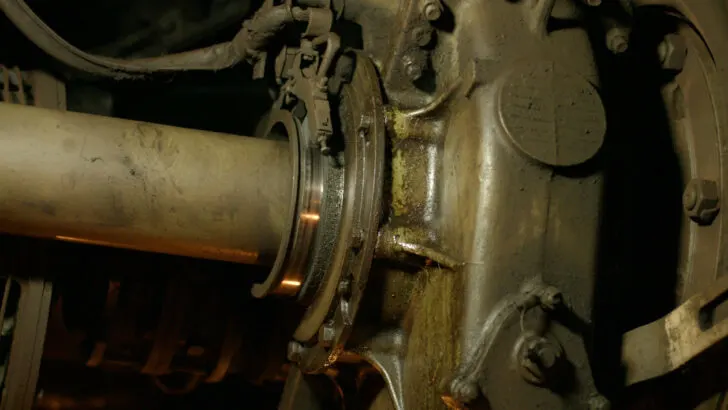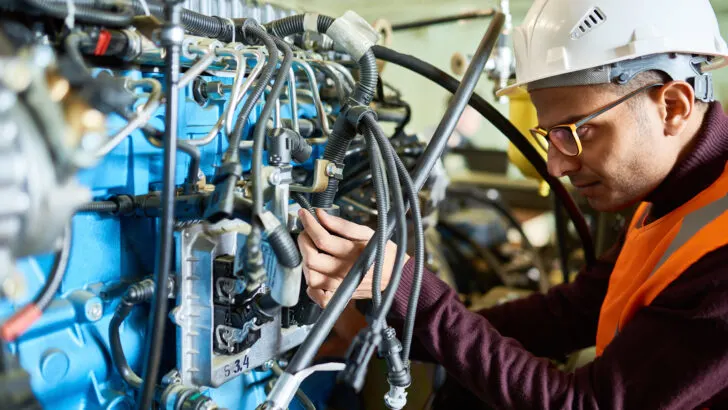Most people out there know what brakes are and what they do, whether you drive a car or ride a bike, but you probably don’t know what a brake retarder is.
A brake retarder is a device that adds supplemental support to the brakes and are usually installed in large diesel trucks. These retarders help slow the vehicle down but are usually unable to bring the vehicle to a complete stop without the brakes as well.
While not incredibly common in the world of normal road cars, brake retarders are incredibly important to ensuring the safety of truck drivers, the goods they carry, and everyone else on the road.
They help make sure that a truck doesn’t go too fast downhill and lose control. Read on to learn more about these devices.
What Is a Brake Retarder?
A brake retarder is any device that’s meant to help the main brakes to slow a vehicle down. While brake retarders aren’t usually able to bring a vehicle to a stop by themselves, they can help maintain slow a truck down or maintain a certain speed when traveling downhill.
There are multiple different types of brake retarders that all work in different ways to restrict the speed of a vehicle, including engine brake retarders, exhaust brake retarders, hydraulic retarders, and electric retarders.
How Do Brake Retarders Work?
Brake retarders work in a variety of different ways to slow a vehicle down depending on the type. However, the thing all brake retarders have in common is that they don’t apply friction to the wheels like normal brakes do to slow a vehicle down. Instead, they accomplish this through other means.
Engine Braking
One of the most common brake retarders used today is the engine or “Jake” brake. However, to understand how it works, we need to quickly go over the basics of how an engine works.
Basically, a mixture of air and fuel is injected into the combustion chamber where a small controlled explosion is created that forces the piston down turning the crankshaft and forcing the other pistons back up.

The energy from the up and down movement of all of these pistons is what the engine uses to move the vehicle.
Jake brakes disrupt this process by opening the exhaust valve at the top of the combustion chamber early, which lets all the air out and creates a vacuum as the piston moves back up. This makes it much harder for the pistons to move back down again, slowing down the vehicle in the process.
Exhaust Brakes
Exhaust brakes are another common brake retarder used to help large vehicles slow down and they basically function as the complete opposite of engine or Jake brakes.
As we mentioned before, engine brakes essentially work by letting all of the compressed air out of the combustion chamber before it can be used to force the piston back down again, creating a vacuum in the process.
Instead of letting all of the air out of the combustion chambers, exhaust braking works by keeping all the compressed air in the combustion chambers. By closing the exhaust valve, the exhaust brake traps all of the air inside the combustion chambers.
Fuel will still enter the combustion chambers but since there’s nowhere for the combusted gases to go they push back on the pistons, making it harder for the pistons to move back up, and retarding the vehicle in the process.
Hydraulic Retarder
As the name suggests, hydraulic retarders use the principles of hydraulics to help restricts the speed or slow a vehicle down.
While a bit more complicated to understand, hydraulic retarders basically function by using vanes, or blades much like those on a windmill wheel, attached to the transmission driveshaft and enclosed in a fluid-filled compartment.

When the vehicle needs to be slowed down, more fluid can be pumped into the chamber. This, in turn, makes it harder for the vanes or blades to turn, as they struggle to move through the fluid in the chamber. All of this creates another efficient way to slow a vehicle down.
A great advantage of hydraulic retarders is that they are completely silent. While engine and exhaust braking can often be quite loud, it is basically impossible to hear hydraulic brakes in action, especially over all the noise coming from the engine and road.
Electric Retarder
While there are slightly different versions of electric retarders, they all work by using the principles of electromagnetic induction, essentially using opposing electromagnetic fields to provide extra stopping force.
Electric retarders can be installed in the transmission, an axle, or on the driveline. They basically consist of a rotor which is attached to one of the aforementioned parts, and a stator, or stationary piece attached to the chassis of the vehicle.
When the system wants to slow down the vehicle, the vehicle’s battery sends electricity to the stator, which creates a magnetic field that the rotor has to travel through. The rotor’s movement through the magnetic field creates eddy currents or loops of electrical current in the rotor which creates an opposing magnetic field.
The rotor’s magnetic field makes it harder for the rotor to pass through the stators opposing magnetic field, which in turn slows whatever part of the vehicle the rotor is attached to, ultimately slowing the vehicle down in the process.
How Are Retarders Different From Normal Brakes?
There are lots of differences between brake retarders and normal brakes, however, the biggest difference between the two is their intended purpose.
First, brake retarders are not meant to be able to stop a vehicle all by themselves. They are only there to assist the regular old brakes and prevent large vehicles from accelerating to uncontrollable speeds when going downhill.
The normal disc brakes that you are accustomed to use the application of friction to the wheels’ rotors in order to slow down and stop a vehicle. However, brakes like this wear down over time, with consistent hard braking causing them to wear down even quicker.
If these brakes get worn down too much, which becomes even more likely if you’re driving a heavy truck down a steep hill, the brakes could fail completely, causing the truck to lose control and crash into whatever is unlucky enough to be in front of it down the hill.
This is exactly why brake retarders are so important. Brake retarders ensure that a heavy truck never picks up too much speed going downhill, and it helps ensure that the primary friction brakes last longer and have less stress to deal with when the vehicle needs to come to a stop.
Regardless of how differently they function, normal brakes and brake retarders are two equally important parts of the equation when it comes to limiting a vehicle’s speed and safely bringing it to a complete stop.
Key Takeaways to Brake Retarders
A brake retarder is any device other than the standard brakes that is used to limit the speed and assist in stopping a vehicle.
Brake retarders are most commonly used on large diesel trucks that carry heavy cargo.
There are multiple different types of brake retarders including engine, exhaust, hydraulic, and electric retarders, all of which work in different ways to slow a vehicle down.
Brakes and brake retarders are both incredibly important when it comes to making sure large trucks are able to limit their speed and safely come to a complete stop.
If you found this article helpful, make sure to take a look at some of my other brake-related articles below!
